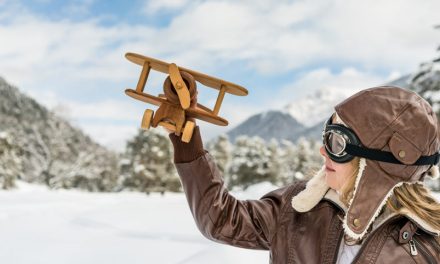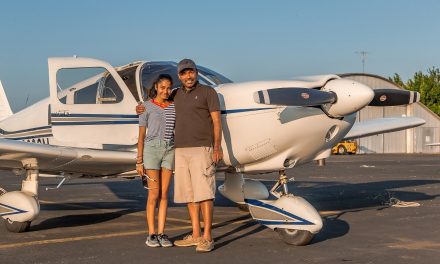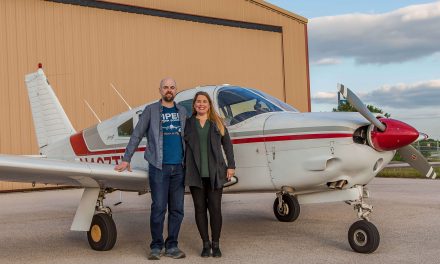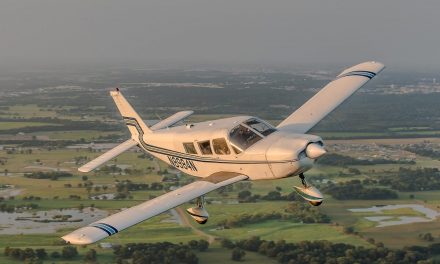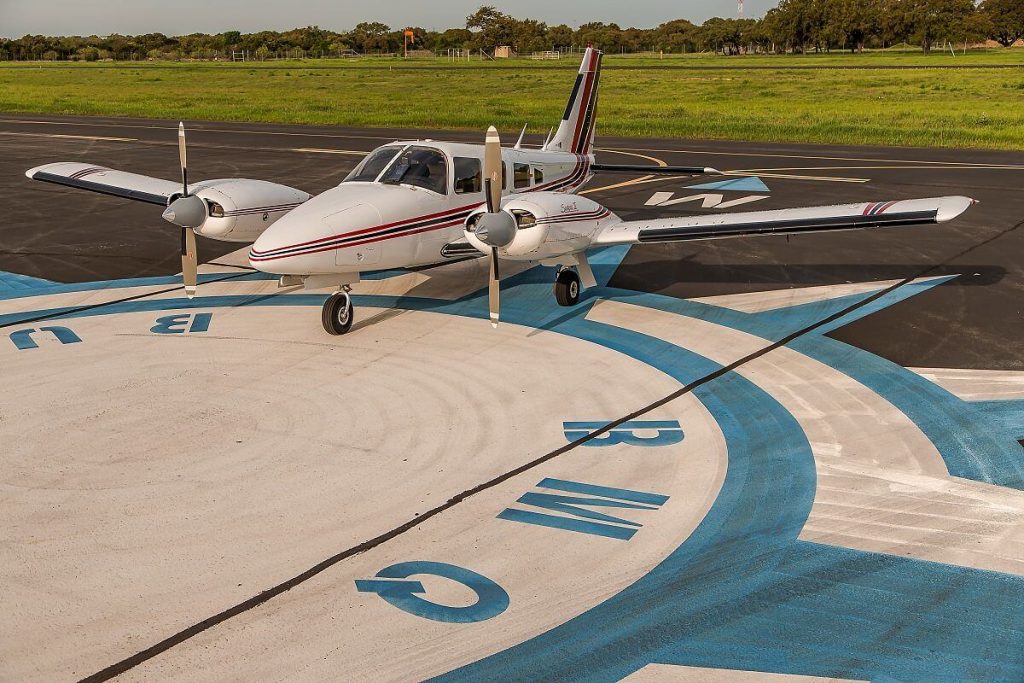
Photo by Jack Fleetwood
By Jason Tuggle
My Piper journey began in 2006. I had always flown Cessnas and owned an older 172. As I waited for a spot in line to get a hangar, a Texas-sized hailstorm necessitated a new airplane and the search began. AOPA’s sweepstakes airplane was a Piper Cherokee Six and as I read the articles about it, I quickly decided that was the plane for me.
My wife and I flew our Cherokee Six all around the U.S. and even the Bahamas. We put around 1,200 hours on it and were truly happy with it. In March of 2016, we found out we were going to be blessed with a baby girl — our first.
In July of 2016, the search began for a new airplane. If we were going to change airplanes, I needed a list of what we loved about the Cherokee Six, what we didn’t want to sacrifice, and what new options were “must haves.” The biggest things we absolutely loved about the Six were the spacious cabin with seating for six, the front and rear doors, the front baggage compartment allowing us to pack extra luggage and leave room in the cabin, and the stable platform. My must have was a twin-engine with turbos for a high single-engine service ceiling. We have a second home in Ruidoso, New Mexico, and I wanted an airplane that could take off from Sierra Blanca Regional Airport (KSRR) at about 6,800 MSL, lose an engine, and still be able to climb. My wish list included flight into known icing capabilities and a little extra speed.
I decided on a Piper Seneca II. The Seneca has the same interior as the Cherokee Six with six seats and the front and rear doors, twin turbocharged TSIO-360-EB engines with a single-engine service ceiling of 18,000 feet with optional wastegate controllers, and an option of flight into known icing.
An acquaintance from an online messaging board had bought a Seneca II and completely refurbished it with new engines, props, avionics, etc. He was my go-to guru for questions. The first Seneca II I looked at didn’t work out. The second one I was interested in looked promising and we put a deposit in escrow. As we made our way through a prebuy on No. 2, it failed. I learned several things to look for on the Seneca II models. Did it have the EB engine upgrades with the VAR cranks? Did it have the Merlyn wastegate controllers? When were the turbos rebuilt last? Did it have the upgraded landing gear to eliminate the recurring AD? What condition was the autopilot in? What condition was the FIKI system in? There are many more systems on the Seneca versus the Cherokee Six and each one was more maintenance and more money to fix if there were issues.
I had always joked with my friend that if he was ever going to sell his Seneca, he had to offer it to me first. As I asked him questions about the second plane I looked at, I told him it fell through and I would continue looking. A day or two passed and I received an email from him with a new idea. How about I buy his? He had been thinking about selling it and he offered it to me. I told him I would take it! I had a prebuy done, but I felt like I had known his plane for years as I watched him go through the rebuild and upgrade process. The prebuy was flawless and I picked it up a week later on my birthday and took the first ride in it from California back to Texas.
My Seneca II has a standard six pack of steam gauges with an HSI in the center. For redundancy, there is a backup electric AI and a second CDI. The audio panel is a PS Engineering PMA-8000BT, which works for all six passengers and is very clear. The GPS is a Garmin GTN 650 with a Garmin SL30 second nav/comm. The Garmin 330ES serves as the transponder and satisfies ADS-B Out. The Garmin GDL 39 3D and Garmin 796 show weather and a larger, secondary (backup) GPS provides XM radio for tunes on those longer cross-country trips. Overall, it’s a very capable IFR avionics platform.
If and when you are ready to buy a Seneca, find someone familiar with them. As most people upgrade to a more complex plane, the additional systems are great, but need to be thoroughly checked out, otherwise it could be an expensive first year getting the bugs worked out.
I have been through four annuals on the Seneca II now and have no regrets. It does cost more to own and operate than the Cherokee Six, but the additional systems make it worth every penny. I no longer have to worry about leaving first thing in the morning from Ruidoso as the density altitude quickly climbs in the summer. I worry less about low IFR or a dark night with my wife and daughter aboard. I actually thought we would fly fewer hours with the additional speed (about 35 knots over the Cherokee Six), but we now fly longer distances that we might have previously grabbed a commercial flight for. Our Seneca has been all over the U.S., Mexico, and the Bahamas and we absolutely love it.
Passenger’s Perspective
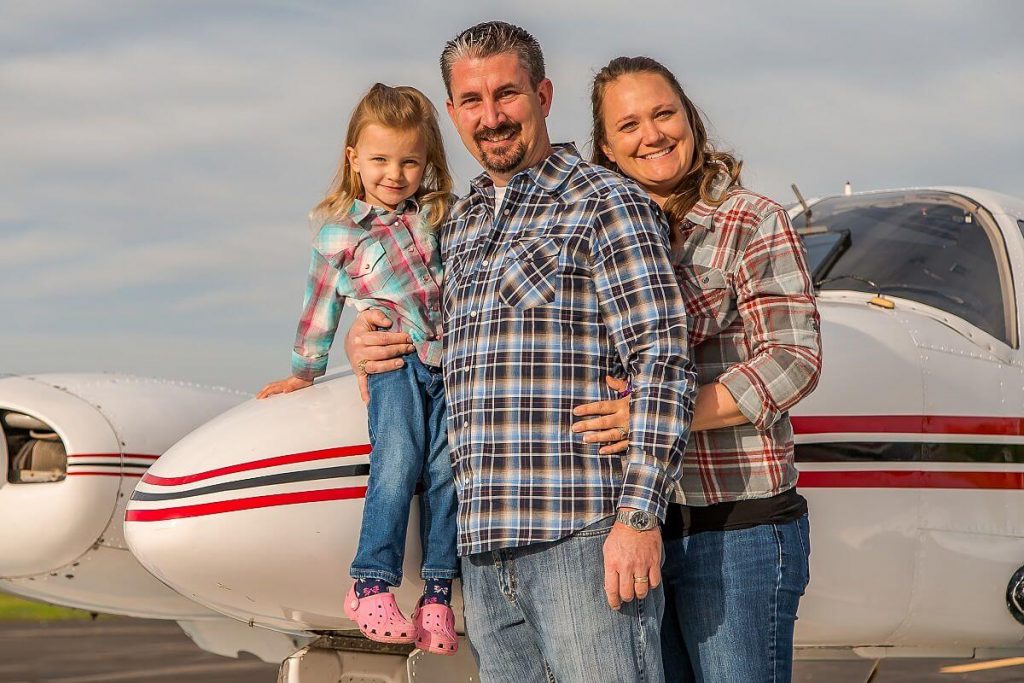
Photo by Jack Fleetwood
By Maggie Tuggle
When my husband, Jason, came home one day years ago and told me he had signed up for a discovery flight I remember thinking, “Oh, he will enjoy that outing.” Little did I know then how much that one hour would completely change our lives. One trip up in a plane and he was hooked. He jumped into flight training the next week and he has spent as much time in the air as possible ever since.
I have to admit, our airplane discussions vary significantly in priorities. He made a priority list when we transitioned out of the trainer (he spent so much time with it I named it Plane Jane, Jane for short). I would joke with my friends that he was out with Jane again.
My list of priorities included fixed gear, room for more people, seats with more padding that all face forward (I get airsick), high safety ratings, wings that I could see, and most importantly, more luggage room and weight allowance.
After one trip in our previous plane, a Cherokee Six, I was sold. I didn’t know how much I would also enjoy the lack of wag (my terminology has improved significantly), the big rear door, and the ability to add and remove the seats for when I needed more room to pack or wanted to give put the dog’s bed in his seat spot. Since the Six was quite a bit younger than our trainer, but Jason spent even more time flying it, I named the Cherokee Six Plane Jane Junior and we called her JJ for short. A few things I learned the blessing of when we made the upgrade to JJ: autopilot, upgraded GPS with weather and traffic, upgraded seat belts, XM radio, and heat (it gets cold up there sometimes). I also really enjoyed the significant speed and climb speed upgrade from the 172.
Honestly, I thought we would keep JJ forever; I loved it. Pilot wives out there back me up — pilots are always talking about the next plane, but we ignore them. Once the avionics are up to snuff and the first two annuals work all the kinks out, whatever plane they are flying is perfect. My husband knew to convince me we were changing planes it would take a lot of leg work and a miracle. Well, in 2016 the miracle happened, her name is Harper Ellis and the safety upgrade that comes from the redundancy enjoyed by two engines was a solid argument for a change. I had to compromise on the retractable gear but the speed and reduction in tail wag was totally worth it.
Plane Jane III, the Seneca we call Tracie, joined our family about the same time Harper Ellis did and what a blessing it has been. The seats were terrible, they had been well used and were seriously uncomfortable, the side panels were old and stained and nothing matched so an update to the interior was the first change that had to happen. The bigger blessing that I didn’t appreciate when we were discussing the upgrade is the turbos. We have a wonderful little place in Ruidoso, New Mexico, and we constantly had to cut our trips short on the last day to be at the airport at daylight to get out in the altitude before it got too hot. Now we are able to climb out anytime no problem.
When Harper Ellis was little, Jason was always trying to get her to hold the yokes and fly with him. Now that she is bigger and loves to push all the buttons and pull on everything we have moved to the back seats and I am very impressed with how little wag there is in the back and I frequently take advantage of the seat removal option to have more room for her to play.
Since the initial interior upgrade, we haven’t had to do much. I was worried about the expense of two engines. For Christmas we got Jason Nulite lights for the gauges and we installed these new snazzy door locks. The value has far exceeded my expectations and I think Jason is a little concerned that he will be flying this plane for the rest of his life. I love Tracie; thank you from the right (and now back) seat.

